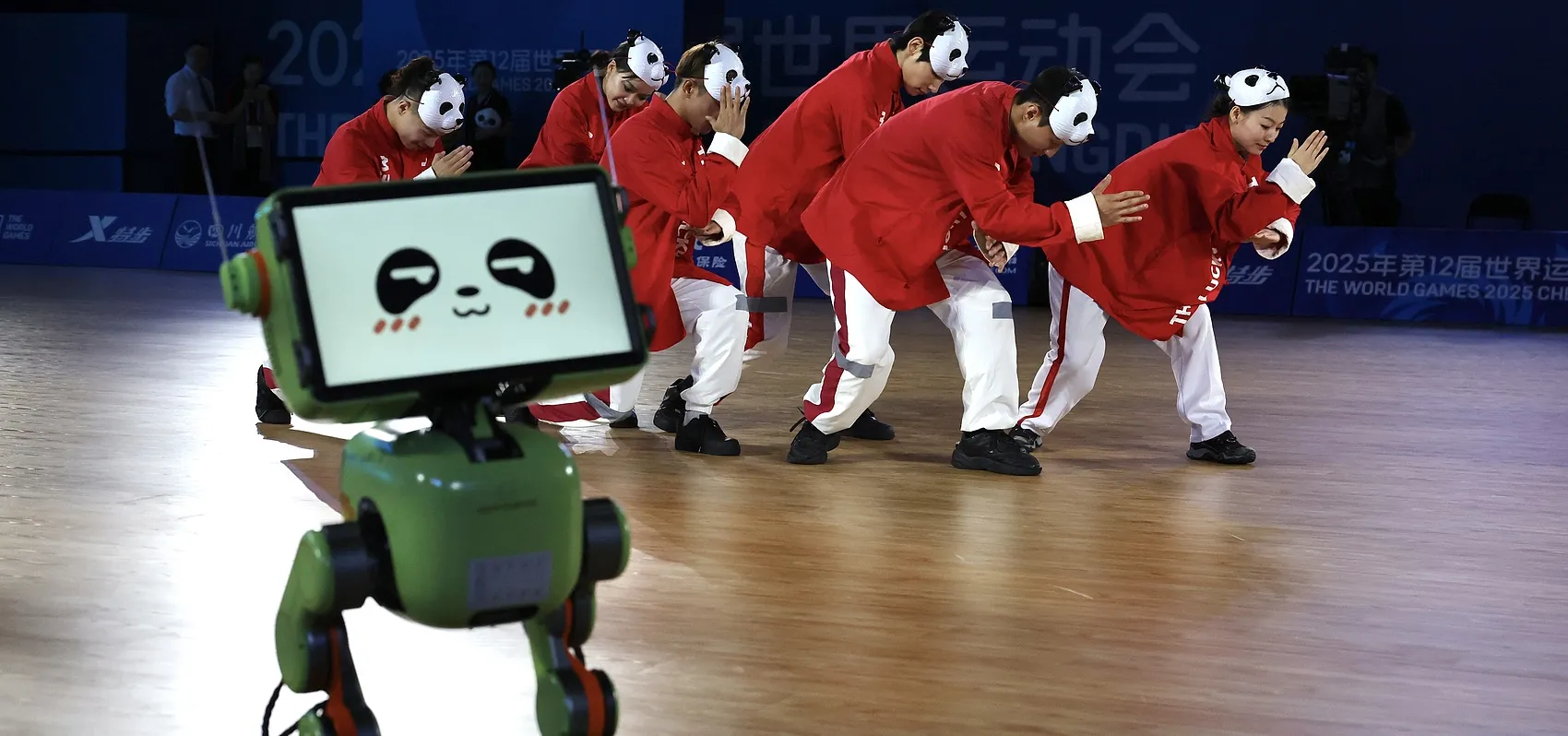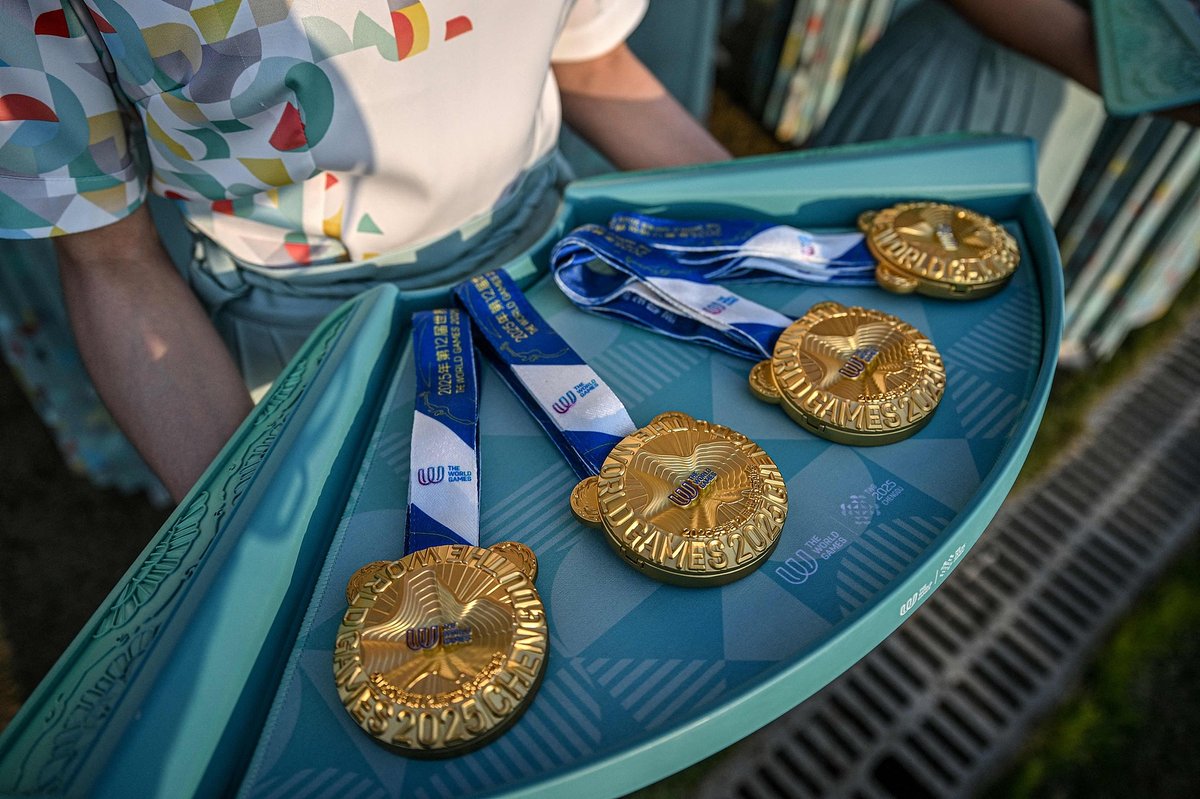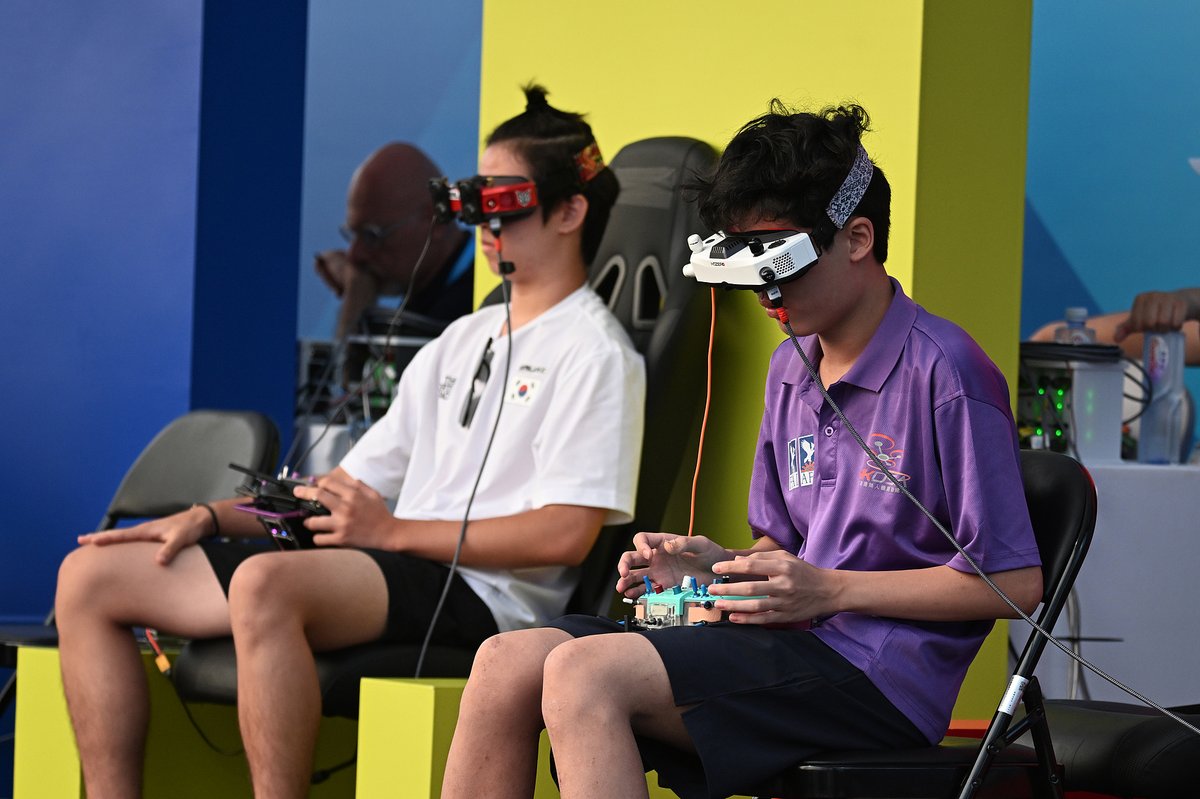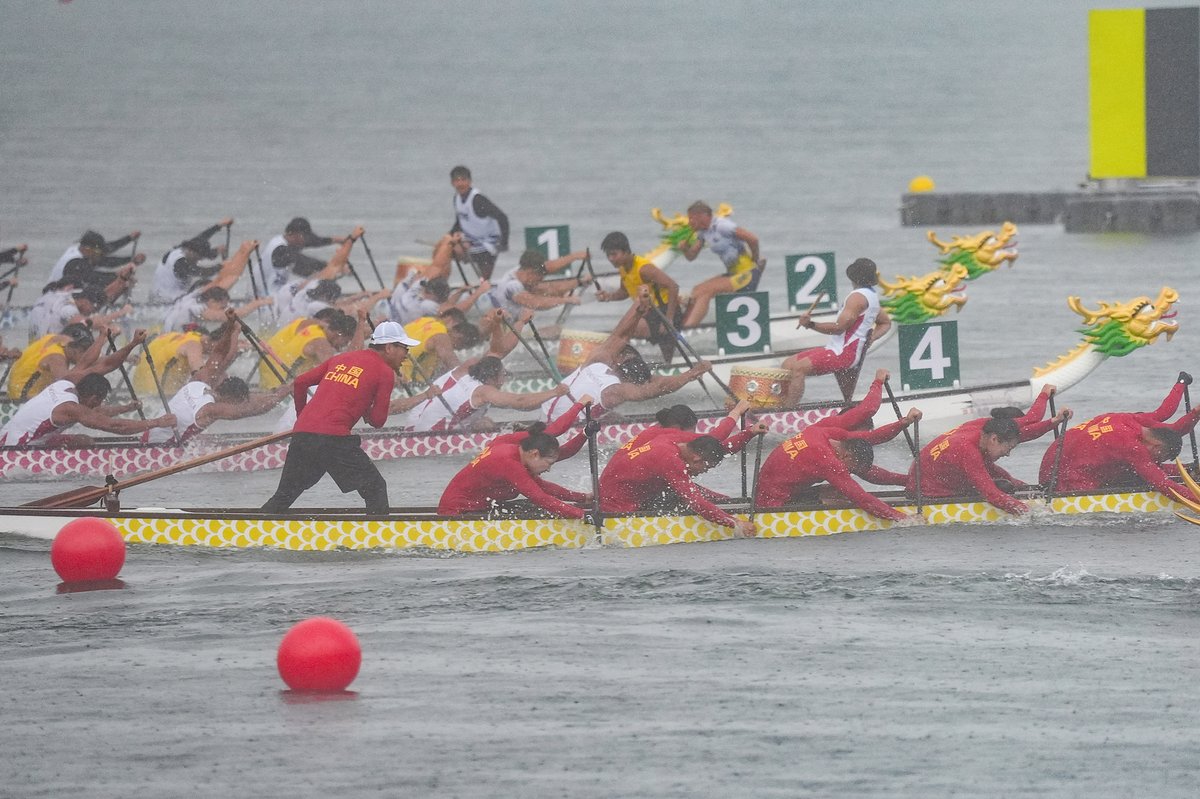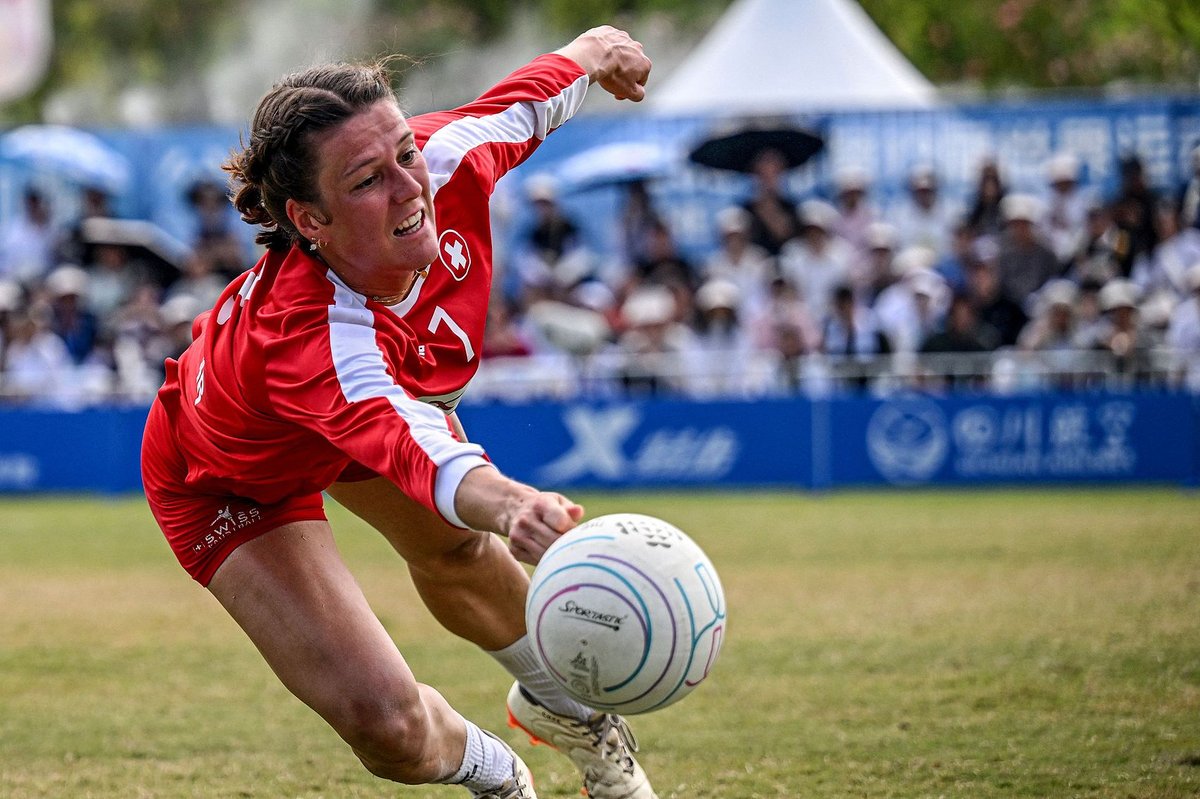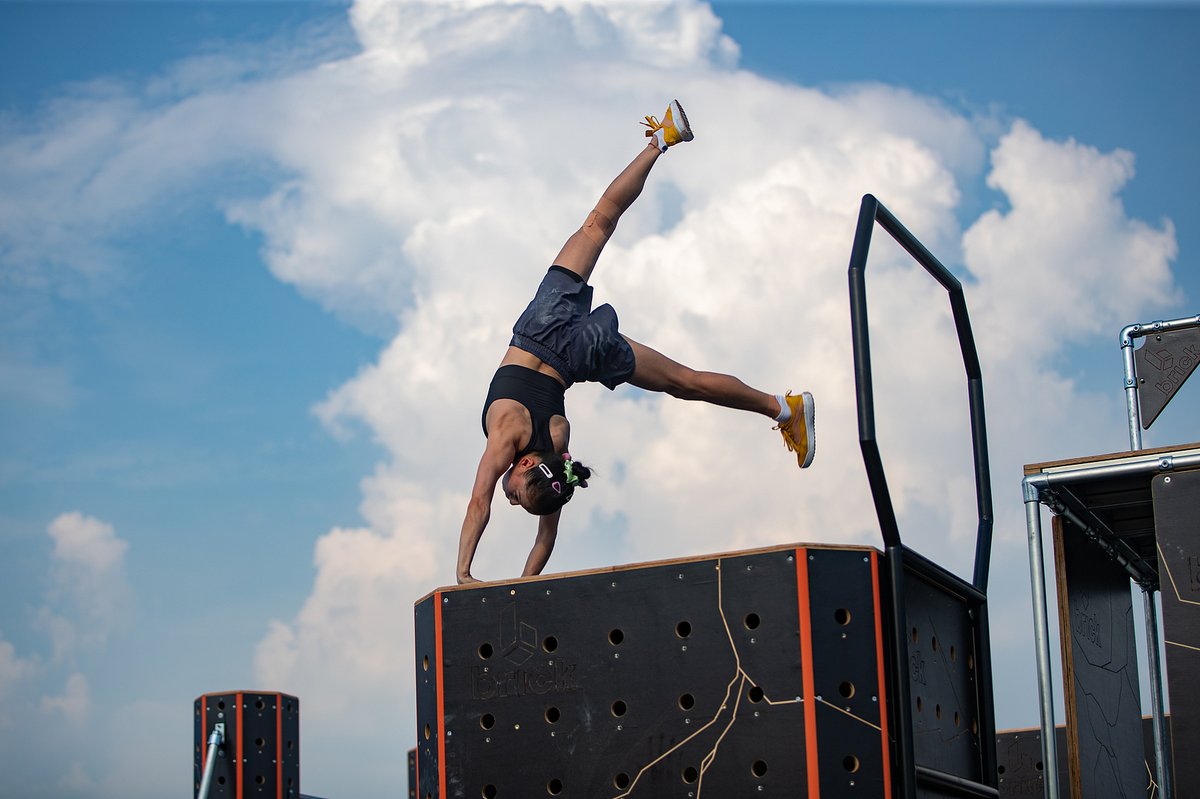From fistball to drone racing, China has put these non-Olympic sports into the spotlight
On the night of August 17, The World Games drew to a close with a blaze of attention both on the field and online. Over 11 days in Chengdu, a record 220,000 visitors witnessed 256 events across 34 sports, ranging from traditional competitions like dragon boat racing to emerging games like ultimate flying discs.
Held every four years like the Olympics, the World Games, often dubbed the “Olympics of non-Olympic sports,” has long served as a testing ground for future Olympic disciplines. Sports like rock climbing, skateboarding, taekwondo, and even badminton—now familiar Olympic events—all made early appearances at the Games before eventually earning their place on the Olympic stage.
This year, the spotlight wasn’t only on the athletes. At the world’s second-largest multi-sport event, the uniquely designed medals, featuring detachable panda shapes, went viral on social media, sparking new interest in this so-called “alternative Olympics.”
Although not part of the official Olympic program, the disciplines and displays of sportsmanship continue to draw athletes and fans alike. From parkour vaults to drone racing, here are four standout sports that have captured attention on the Chinese internet.
Drone racing
On August 14, LED-lit drones shoot from the start line like arrows loosed from a bow, their speed battles unfolding against the night sky. Chinese racer Li Tianxing, headset on and body leaning forward, sent her fingers dancing over the control sticks. The crowd watched in breathless silence, eyes fixed on the giant screen streaming the race from the pilots’ first-person view. At 13, Li is the youngest drone racer at this year’s World Games in Chengdu. She and her two teammates, 17-year-old He Yutong and 18-year-old Huang Yueqi, all from the same high school in Guangzhou, make up Team China.
Team China may be young, but so is the sport itself. Drone racing began in Australia in 2014 and debuted at the 2022 Birmingham World Games in the US, where French athlete Killian Rousseau won gold. Dubbed “Formula 1 in the sky,” the race has pilots wear flight goggles to control their drones from a first-person view, reaching speeds of up to 160 kilometers per hour on a 500- to 600-meter course. They weave through 40 to 50 obstacles, and the first to complete three laps wins. Drone racing is not just a game of speed but a comprehensive test of a pilot’s skill, mindset, physical fitness, and strategy.
Japanese athlete Yuki Hashimoto took first place this year, followed closely by Kwan Chun Yan from Hong Kong, China. While He and Huang only finished seventh and eighth, their coach Kong Haisen, who himself placed ninth at the 2022 World Games, remains optimistic about the sport’s future in China. “Since most of the best drone equipment is made here, the cost of developing the sport domestically is relatively low—an advantage for its wider adoption,” Kong told Xinhua News.
Dragon boat racing
At this year’s Chengdu World Games, dragon boat racing drew immense attention from Chinese netizens—but not for victory. Despite its ancient Chinese origin, the sport delivered no golds for Team China, which left with just two silvers as Indonesia, Ukraine, and Thailand ruled the water.
Some attributed the disappointing result to differences between China’s traditional dragon boat racing and the rules set by the International Dragon Boat Federation (IDBF). In China, formats vary by region, but the sport is usually single-gender, with 14 to 36 paddlers, a steerer, a drummer, and a gong beater—a standard crew of 23 in formal contests. Many traditional races wind through rivers and lakes with curves and obstacles. By contrast, dragon boat racing at the World Games features smaller mixed-gender crews of 8 or 10 and no gong beater. It debuted as an invitational sport in the 2005 Duisburg World Games in Germany. This year marked its first official inclusion.
In China, folk dragon boat racing is often a festive highlight of Duanwu, or the Dragon Boat Festival, held in honor of Qu Yuan (屈原), a revered statesman from southern China 2,000 years ago. Internationally, the sport has spread from Asia to much of the world, driven in part by the IDBF, founded in 1991 to standardize rules and stage global competitions. The IDBF estimates there are 300,000 participants in Europe, 90,000 in North America, and many thousands in Australia and New Zealand. At this year’s Chengdu World Games, 12 teams from around the world competed.
With dragon boat racing becoming a full-fledged global sport, the call to include it in the Olympic Games is growing, especially following its appearance as a demonstration event at Tokyo 2020. Supporters cite its non-Western origin, arguing that its addition would diversify the Games, while critics worry that the audience remains too small and the number of athletes too large for the Olympic Village to accommodate. Either way, the success of non-Chinese champions at the Chengdu World Games shows that the sport has truly crossed national boundaries.
Fistball
On August 9, cheers rang out during the first fistball competition at this year’s World Games, including the Sichuan dialect “xiongqi (雄起)” and the German “Hopp,” both meaning “go for it.”
This was the first official fistball game held on the Chinese mainland. China didn’t compete in this year’s game as the Chinese mainland’s first-ever fistball team, composed mainly of local school PE teachers, was only established last September in Chengdu.
With its origins dating back to at least the 1500s in Italy, fistball has long been popular in Europe, South America, and Africa, and has been a World Games event since 1985. Also known as “grassland volleyball,” the sport involves two teams of five, who compete by hitting the ball only with their fists and forearms (rather than every part of the body as in volleyball games) across the net in between on grasslands six times the size of a standard volleyball court.
As the event wrapped on August 12, the women’s winners were Brazil, Switzerland, and Germany, while the men’s top teams were Brazil, Germany, and Austria.
Transliterated as 浮士德球 in Chinese from the German term “Faustball,” the sport remains quite niche in the country. But Jin Dong, a member of China’s newly established team in Chengdu, believes that won’t be the case for long. “Fistball has a low technical threshold and is suitable for all people, young or old,” Jin, a PE teacher, told Xinhua News this June. “When I introduced the ball in my class, the majority of students were interested. Many of them have made paintings and posters to promote the sport.” According to Feng Cheng, the team’s coach, some schools and organizations from other provinces, such as Fujian and Guangdong, have contacted them in the hope of introducing the sport locally. He believes that more people would become aware of and interested in the game after the Chengdu World Games.
However, Jin is concerned about the lack of venues and balls, which are different from footballs and volleyballs. “The balls we use were brought from Germany by Spille, head of events at the International Fistball Association,” he told Xinhua.
Similarly, China did not participate in this year’s tug-of-war event, despite the sport’s long-standing popularity in the country. Compared with the hard-ground version that Chinese players, especially women, excel at, the outdoor grass format, like the one featured at this year’s World Games, is still new to China, according to He Zhenwen, head of the Chinese Tug-of-War Association. Over the past several years, the number of players in the outdoor event has grown, which requires more exquisite and costly (natural grass) venues and sports equipment, with two championships organized by the association.
Parkour
On August 13, former national gymnastics captain Shang Chunsong from Hunan claimed the women’s freestyle parkour gold at the Games after a dramatic scoring reversal: An initial judging error had originally denied her first place before officials corrected the result. Shang’s routine featured a string of difficult moves, including 360-degree aerial flips, which have impressed audiences with both precision and flair.
Praised as the “art of movement,” speedy parkour has been among the most anticipated events of the World Games for its striking visuals. The competition featured two categories—speed and freestyle—with 24 athletes from around the world taking part. Athletes must use their techniques, including running, climbing, jumping, and rolling without any equipment, to navigate various obstacles and finish the course in the shortest possible time.
Born in France in the 1990s, parkour first reached China in 2006 and made its debut at the World Games in 2022. Though still relatively new in the country, the sport has quickly gained a following. According to Chongqing Daily, the Ministry of Education plans to include parkour as an “emerging sport skill” in a broader program that evaluates young people’s overall physical skills and fitness. This initiative has already been piloted in places like Zhejiang and Jiangsu provinces, and the safety and value of parkour are gradually gaining recfognition. The Chinese Extreme Sports Association estimates that there are more than 150 organized parkour groups nationwide, with over 100,000 amateur athletes. In Chengdu, even elementary schools are introducing parkour to students to spark their interest for the sport.





